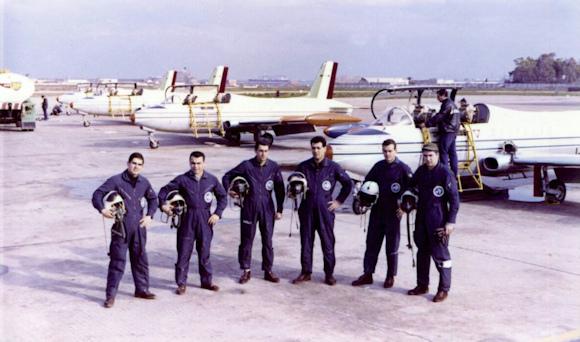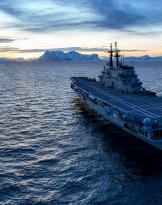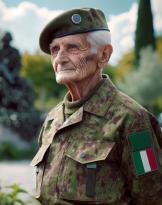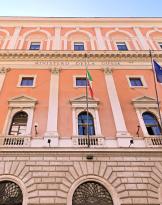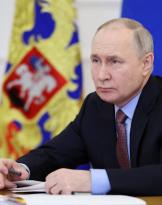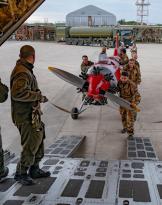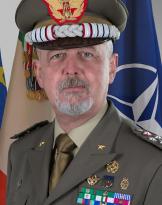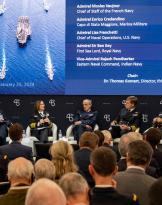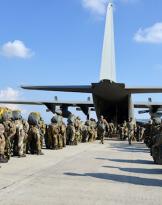Shortly before Christmas, com.te Gianfranco Sbocchelli, a Trieste DOC, left us. Military pilot at the 46th Pisa Aerobrigata in 1966, he joined Alitalia in 1967 where he pursued a long professional career: navigator, pilot, first officer, flight instructor and finally long-range commander on Boeing 747.
I had the pleasure of meeting him at the Bresso airport after his retirement, when he came to fly with his Pa18.
Of course the Pa18 was not the Boeing 747 but the professionalism with which it continued to fly was recognized by its meticulousness and precision.
I decided to write this memory in the best possible way by addressing those who had known him for many years, when he was a novice pilot at the Aeroclub of Ronchi dei Legionari, at the Flight School of Brindisi and finally online, on Alitalia aircraft: The commander Fulvio Chianese.
Gianfranco Sbocchelli and Fulvio Chianese met at the Ronchi Aeroclub in the 1960 where the instructor, a pilot of the 1 ° and 4 ° Stormo Caccia since 1930, was Raffaele Chianese, Fulvio's father.
But I leave the floor to Com.te Fulvio Chianese ...
Renato Cortelletti
Gianfranco Sbocchelli born Trieste in 1941 from a well-off family, his father has the representation of an important company that produces woodworking machines.
At 17 years, in the 1959, his father pays him the course to obtain the pilot license of 1 ° degree to Ronchi dei Legionari, to the Falco Aeroclub. His instructor is my father, already a pilot of the 4 ° Stormo Caccia, who had just returned from the Galatina Flight School where he had been an instructor on T-6, G-59 and Mustang.
In the 1960-1961 I know Gianfranco in Ronchi where I too started flying. I aspired to apply for the AUPC course (Official Riders Pilots of Complement) but "I was not old" and my father did not want to "sign" (then the greatest age was taken at 21 years).
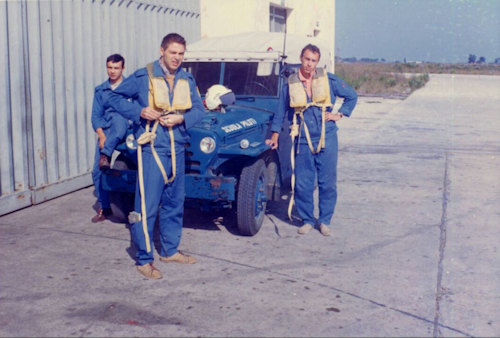
I come to know from Gianfranco that Alitalia organizes driving courses in Brindisi. He has already applied for the selections. I speak with my father and, if I choose this solution, is available to grant me the signature.
In November of the 1963, Gianfranco and I go to Rome, we pass the selections that include a day of medical visits to the Institute of Legal Medicine of the AM and two days to the AZ Training Center for tests and talks (on 600 aspiring we remain in 65). Let's go back home waiting for the 1 February 1964 course to begin.
At the end of January 1964 we leave again for Rome, I with an old fiat 500 and Franco with an Alfa Spider: destination Alitalia Training Center. We take accommodation with a family in Ostia Lido, a bedroom in two.
At Fiumicino we start immediately with the course (the theoretical part) for the achievement of the patent of 1 °, 2 °, 3 ° degree, route officer of 2 ^ class and radiotelephony in English plus the MB-326 course. Every month, those who do not pass the "internal" exams are exonerated. After six months we remain forty and we leave for Brindisi. We are housed in the barracks and assign us the rooms of the non-commissioned officers while for the canteen we use that of the officers. The flight instructors come from the AM School of Lecce (Galatina), they are assigned in "loan" to Alitalia (several of them will then remain there).
A few years earlier Alitalia had entered into an agreement with the head of sm gen. Remondino (ex pilot of the 4 ° Stormo of Gorizia) that foresees a collaboration with the flag carrier. The AM would provide the pilots and made available the military base of Brindisi, Alitalia would have purchased the MB-326 and provided for their maintenance. All this because Alitalia urgently needed new pilots that the AM could not provide to avoid remaining "undefeated". The agreement also stipulated that passing the course would be equivalent to having served in the military service.

In Brindisi, in two cycles of about six months, we complete and pass the flight exams and at the end we remain only in 20 "survivors"! The previous course had been much worse.
In October 1965, Comte Molinari, head of training at Fiumicino, came to Brindisi. All twenty of us are brought together in a small room: Alitalia's "plans" have changed due to a crisis in the world of Aviation, recruitments are delayed for three months. But that's not all: only half of the course will go online in three months while the other half will serve in the AM for a year.
Franco is among the latter and part first for Latina and then for Pisa, at the 46 ^ Aerobrigata and where he flies on the C-119 as a co-pilot. He returned to Alitalia in the early months of the 1967.
In Alitalia, after the course on the DC 8 / 43, Gianfranco is employed as a navigator, then he makes the transition on the DC8 / 62 and two years later he is assigned to the DC9 / 30 as a second pilot.
Pass the command course on DC9 / 30 in September 1974. It then transits on the MD80, on the Airbus A300 and finally on the Boeing 747.
For a couple of years he is also an instructor at the Alitalia Flight School in Alghero where he flies on SF260, P166 and Cheyenne.
He ended his career in Alitalia when he completed the 60 years with assets of around 20.000 hours of flight but continues to fly on General Aviation aircraft for several years and in several countries.
Although we had spent long periods together, in Alitalia our careers followed different paths and we rarely cross each other: we were almost always on different aircraft. Only on the A300 we flew together, on the "Lagos", where the "reinforced" crew was planned.
I think I'm one of his few colleagues, perhaps the only one who knew him well. He had an innate instinct for flying and was always calm even in the most difficult situations. I never saw him study but he always passed the exams brilliantly.
Unfortunately only the disease has seen him a loser!
Fulvio Chianese
One evening, not long ago, during a dinner Gianfranco, chased by the questions of us boys, remembered that when he finished doing the instructor on the Cheyenne in Alghero, to some of his fellow instructors who came from the AM and had no experience of Flight di Linea, advised against going directly to the CheXenne AXXUMX and some did not pay attention: they were rejected in the qualification course and returned to DC300. The A9 was an aircraft that had some peculiarities, if you exceeded the cruising speed and you entered a turn of 300 °, you could hear "clink" the glasses of the first class, located just behind the cockpit, was the "buffet onset"!
 When asked what the Boeing 747 was like, he replied that, compared to an MD 80, it was even easier to taxi to the ground. This left us stunned because we knew the enormous size of the aircraft.
When asked what the Boeing 747 was like, he replied that, compared to an MD 80, it was even easier to taxi to the ground. This left us stunned because we knew the enormous size of the aircraft.
He told us that the 747 had the "articulated" main cart to reduce the radius of the curves during taxiing. He once told us that during a flight (if I remember correctly for Tokyo) he heard on the radio an 747 of the Air France flying 2000 standing over him with the same destination but faster. He slightly advanced the four handcuffs of the engines and the plane immediately reached Mach 0.92, without the slightest vibration. He earned those few minutes that allowed Air Traffic Control to put it ahead of the French 747 in the Tokyo approach sequence and land it first.
On YouTube you can find a 1964 movie (8 mm film) shot by Sbocchelli and Chianese when they were at the Brindisi Flight School and were flying on the MB326D (v.link). It is a unique piece that documents a historical period of Alitalia.
Now Gianfranco can finally fly in the blue painted blue ...!
Renato Cortelletti

(images provided by c.te Chianese.) In the last photo, taken in 2104, the 5th course 50 years later)

